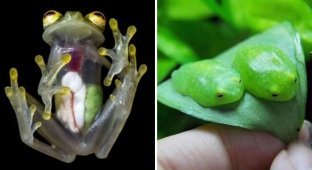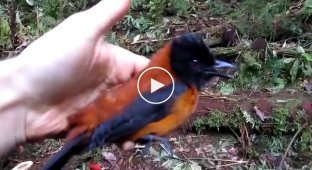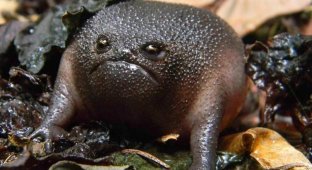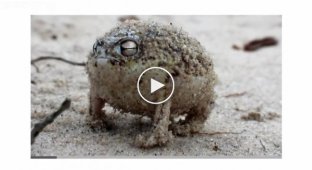Terrible leaf climber: monstrous concentration of deadly poison (9 photos)
The terrible poison frog, or golden poison frog, is a good thing they live exclusively in Colombia. Because the first encounter with a poison frog in the wild can easily be the last! 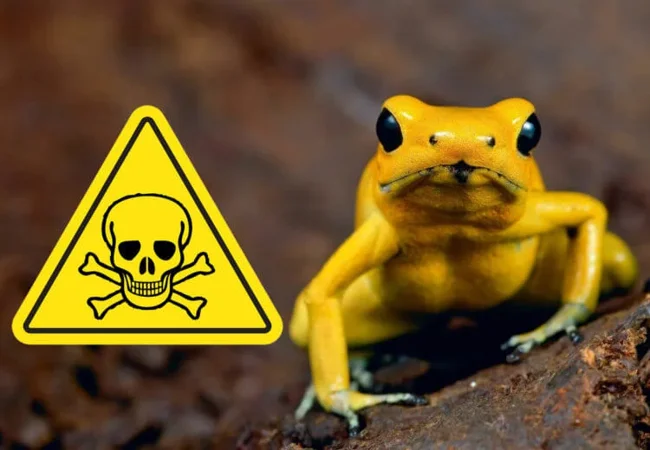
That cute poison frog in your company.
Even though the frogs are brightly colored - yellow, orange and mint - it is almost impossible to notice them in the dense canopy of the tropical forest! The body of the poison frog is 2-6 centimeters in size, and weighs no more than 30 grams. For comparison: the most common lake frogs grow up to 20 centimeters and weigh about 700 grams. 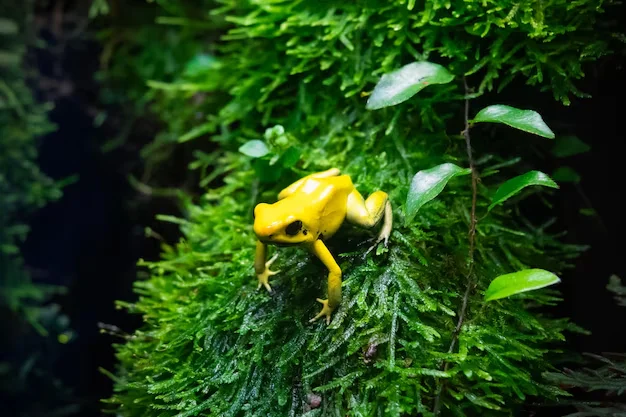
How do you expect to find such a tiny thing in the lush jungle?
But the toxin in such tiny things is enough for two dozen people or a couple of adult African elephants. Only 1 mg - and what power! The main active ingredient of their poison is the alkaloid batrachotoxin. Alkaloids include morphine, cocaine, caffeine. And among them, batrachotoxin is the most deadly. It affects the victim's peripheral nervous system, which provides communication between the brain and spinal cord with the rest of the body and internal organs. 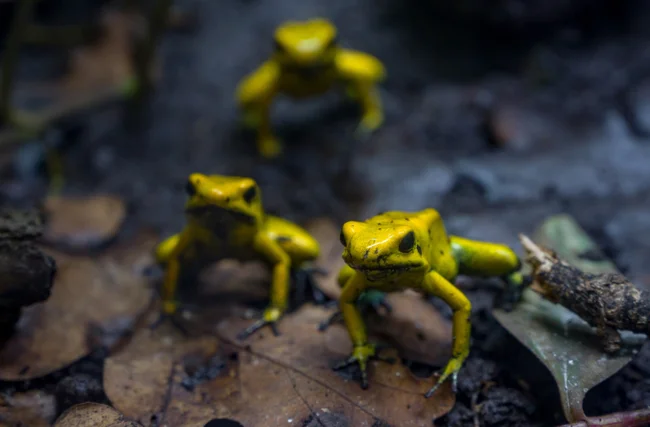
This gang can wipe out a small settlement!
As soon as the frog gets nervous, the glands on its back immediately begin to produce toxic mucus. It is enough to simply touch the leaf climber for the poison to penetrate the body and lead to irreversible consequences. The poison causes paralysis of the entire body and entrails, including the heart, which causes death very quickly. 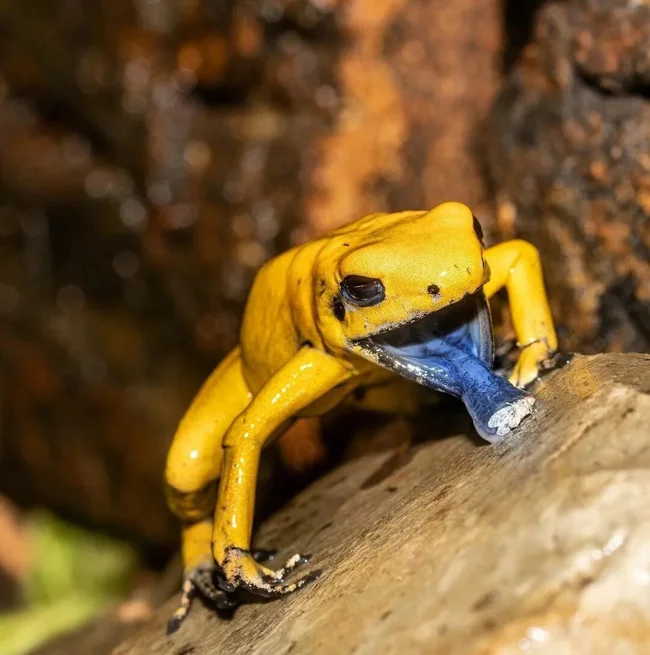
Ugh, what horrors you are telling about me! Now stop!
It's a real disaster if the poison gets into the body intramuscularly. The lethal dose for a human is only 2-7.5 micrograms! At the same time, one frog produces from 500 to 1000 micrograms of poisoned mucus! And local tribes have taken advantage of this. The Ember and Cofan peoples catch leaf climbers and coat their darts with poison. The weapon remains toxic for up to two years, and small animals fall dead with one shot! 
People themselves are not poisoned by prey killed by a poisonous dart. Heat treatment of the product breaks down the poison, making the meat safe.
That is why leaf climbers have only one enemy in tropical forests - the fire-bellied snake from the pseudocoral snake family. Apparently, it was this reptile that made the tiny frog so deadly. The fact is that the snake developed immunity to the amphibian's poison. Thus began an arms race: reptiles attacked frogs, which forced them to make their mucus even more toxic. And so on in a circle, until the leaf climber turned into the most poisonous creature on the planet! 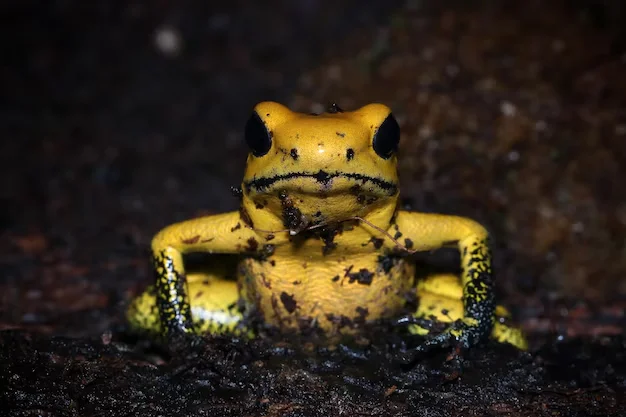
One more word, and I'll touch you!
And what's most surprising is that leaf climbers can't even produce poison themselves! They just choose their diet correctly: batrachotoxin is found in beetles of the melyrid family. Frogs eat them, and then, using special chemical reactions, send the poison straight to the glands on the skin. So amphibians do not poison themselves, but become extremely toxic to everyone around them, except for their own kind. 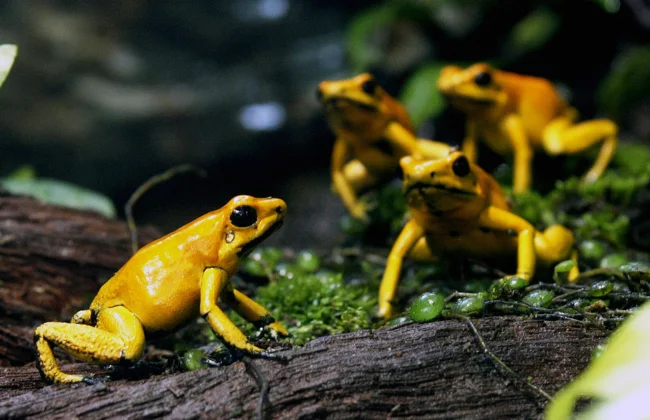
A gathering in a "friendly non-toxic group".
That's why leaf climbers can't use super weapons in ritual mating fights. Males have to sing songs all year round and fight for the attention of females. Amphibians are not known for their high morals: there are often several suitors for one lady and vice versa. Frogs actively jump, stroke each other with their paws and stimulate spawning in every possible way. 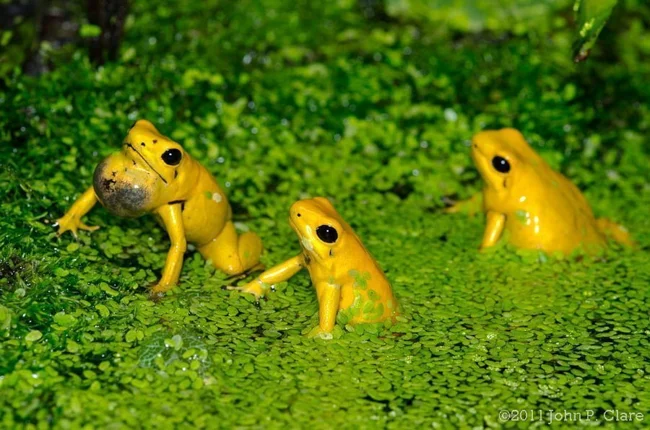
That same romantic whose serenade is more deadly than poison.
After fertilization, the male remains to guard and protect the clutch. To hide the beloved children, the eggs are hidden under fallen leaves. After two weeks, the babies hatch and jump on the back of their daddy so that he can give them a ride to the nearest body of water. Usually - just puddles in the forest after the rain. After 10 days of floundering, the little ones come out on land, switch to a toxic diet of beetles and turn into terrible leaf climbers. 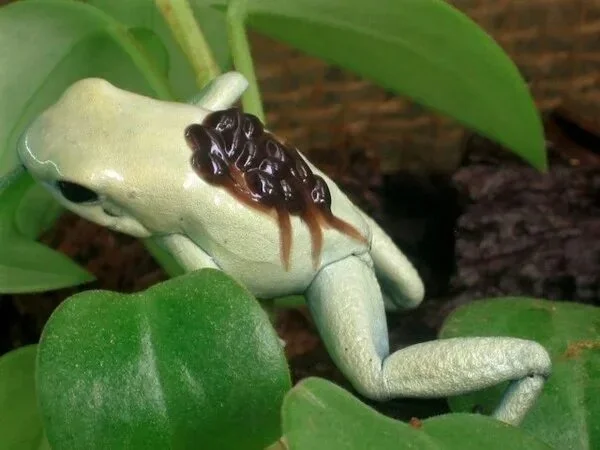
A caring father takes his children to kindergarten. Even frogs do it, but our dads don't!
But even despite the power of the poison, amphibians cannot resist the destruction of their habitat and, as a result, extinction. At least poachers have stopped hunting for leaf climbers to sell on the black market. Enthusiasts in the last century bred a “domestic” population of golden frogs for keeping in a terrarium. They are absolutely safe, because they produce poison exclusively due to a toxic diet. However, in our country, keeping terrible leaf climbers is still prohibited.












